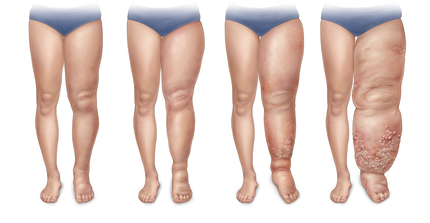Lymphedema is a condition of localized fluid retention and tissue swelling caused by a compromised lymphatic system. Treatment includes medical compression, among others.
- Do you have a persistent, asymmetric swelling in one or more of your limbs?
- Is your affected limb painless, but you feel tightness in it?
- Are other family members also experiencing swelling of the limbs or did you undergo a cancer treatment or surgery where lymph nodes had to be extracted?
If so, your lymphatic system may be compromised and you may have developed lymphedema. Read here why compression is essential in treatment of lymphedema and what other treatment options exist.
What is lymphedema and what are its symptoms?
Lymphedema is a condition of localized fluid retention and tissue swelling caused by a compromised lymphatic system. This results in swelling in one or more limbs. However, lymphedema can also occur in other body parts, e.g. neck, genital region, inguinal region, face, etc.
Here’s what you should know about lymphedema, its treatment, and why compression therapy is essential.
How do I recognize lymphedema?
- Swelling (called edema or congestion) in one or more limbs (often asymmetric)
- If lower extremity is involved, the swelling is present on the back of the foot
- Painless
- Feeling of tightness
- Restriction in range of motion, depending on lymphedema stage
- Thick or hardened skin, depending on lymphedema stage
- Recurring skin infections
- Stemmer’s sign positive, depending on lymphedema stage: This means that a fold of skin at the base of the second toe, the base of the middle finger, or another body part with swelling cannot be pinched and lifted.
“All We Do Is Veins, All Day Every Day.”

